How to Read Tire Size – Described in Details
Tire size does not just mean its width or height. It consists of many parameters that are essential to understand in order to read tire size.
Our mission is to make you understand each and every terminology so that when you find those terms on your vehicle’s tire, you will be in the capacity of relating them and interpret the meaning successfully.
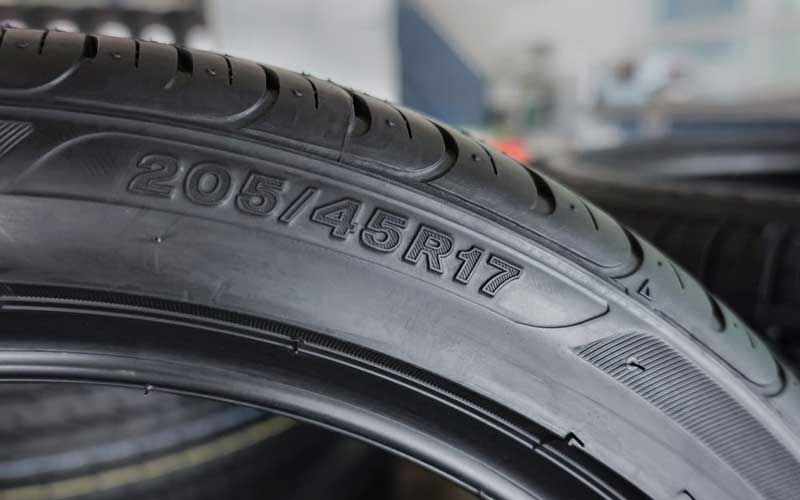
There is a number of terms imprinted on your tire’s side. Most people do not pay attention to those terms, and even if they do, they fail to understand them and interpret meaning.
The solution is very simple, know what you are reading and crack the code. Psychology says that when you read something and do not understand it, your interest is automatically diverted.
And when you read something that you understand, you develop more interest in it. Hence, understanding those terms would be a considerable choice to make, and that is what we are exactly going to do here.
How to read Tire Size
Special Code
This task is going to require some of your observing skills. You will have to keenly observe the code imprinted on the side of the tire.
The code consists of numbers and alphabets with 12 digits in total, each carrying a specific data. Interpreting it would become very easy once you have familiarized yourself with the code.
The code would look like this: P215/65R15 95H
Type of Tire
The first digit of the code would be an alphabet stating the type of tire. Most of the tires installed in cars have P as their first digit, which states that this type of tire is for a passenger car.
Passenger car includes a family car, minivan, SUV, and light-duty truck. All of these cars should get a P-type tire.
Tire Width
The following three digits indicate the width of the tire from one side of the tire to the other side of the tire in millimetres. In the code used for explaining tire size, 215 mm is the width of this tire.
The total distance from one end of the tire to the other end, side to side, is 215 mm. Similarly, you can identify the width by noting the first three digits following the type of tire’s code.
Aspect Ratio
Aspect Ratio between height and width of the tire is mentioned in the following two digits after the width of the tire.
Here in this example, 65 is the aspect ratio of height with width, which means that the height of the tire is 65% of tire’s width. You will calculate 65% of 215 mm.
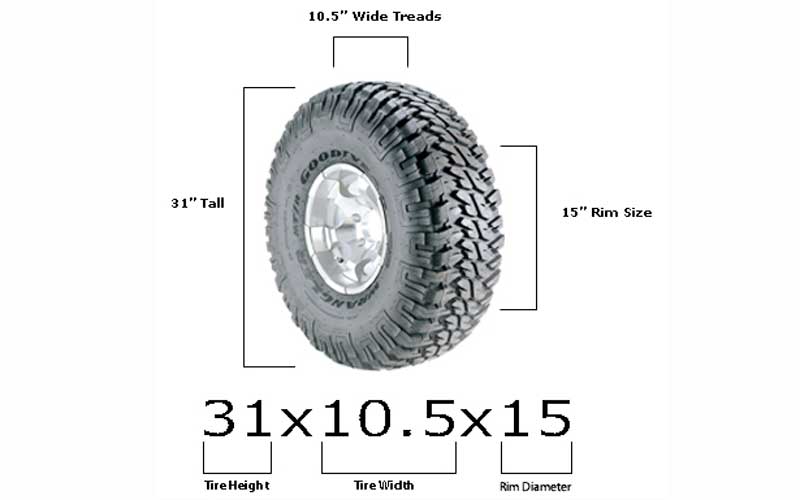
Construction
This part of the code tells about the construction of the tire. For this particular example, R states that the tire has radial layers.
Wheel Diameter
After construction, the wheel diameter is displayed. Wheel diameter allows you to choose a wheel for your tire. In this example, the wheel diameter is 15, which means that a 15-inch wheel would fit in this tire.
You will not have to physically try each wheel to find out that a 15-inch wheel would be best suitable for this tire because your tire will already be mentioning it to you.
This part of the code is very considerable, hats off to the person behind this idea. It really has changed the way things would work.
Some further readings
Load Index
The tire of a vehicle does not just have to bear the weight of the vehicle. It has to have the potential to withstand additional weight.
People would be sitting in it; the owner might put some heavy stuff in it. How would you know the maximum weight it can withstand without damage?
The load index is a figure that shows the maximum load a tire can tolerate under full inflation. Generally, the maximum speed is also mentioned with the load index. The meaning is interpreted that the tire can withstand x weight in y speed. Weight is displayed in kilograms as well as pounds, whereas the speed is showed in kilometres per hour.
Always note the load index before filling your car with heavy stuff. The tire is strong enough to tolerate the heavyweight.
Speed Rating
A speed rating has been discussed above. It is the maximum speed that a tire can achieve without bursting.
Usually, in a passenger, the tire is installed that can handle the car’s top speed regardless of the fact that the owner might never cross 60 mph.
The speed rating is very crucial to know because you cannot install a tire with a lower speed rating than the actual speed of the car. This can lead to a brutal accident and even death. It is the responsibility of the driver to know the speed rating of the vehicle’s tire.
There is a myth that it is not Bugatti’s engine capacity that limits its speed; rather, it is its tire that would blow up if the car goes even further than the limited speed. Hence, the speed is limited through the computer.
Anyhow, Bugatti is a supercar, and the tire we have taken as an example is for passenger cars. Never mind!
Tire Identification Number
Every product at the time of their manufacture gets an identification number. The cars have chassis number under their frame that is used to identify them. Similarly, tires have an identification number, as well.
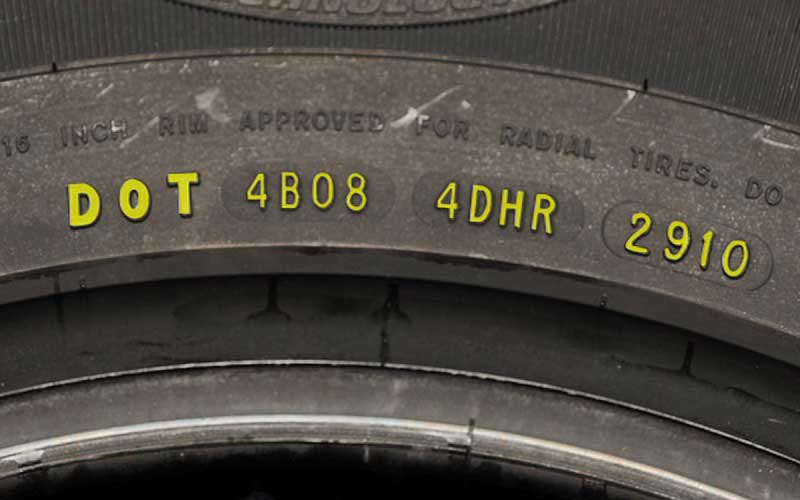
The tire says DOT somewhere on the side of it, which stands for Department for Transportation. Department of Transportation is responsible for all the regulations related to transport.
All the regulations on the tire are also imposed by DOT. Just ahead of this DOT logo, there are some digits that are known as tire identification numbers.
This identification number can help you trace down the factory they were built in, the week and year of their production. You can trace down its age.
UTQG
It stands for Uniform Tire Quality Grading. DOT has developed a grading system that ensures the quality of a tire before it is allowed to be sold in the free market. The newly manufactured tire is passed through a series of tests.
Those tests allow the authority to grade tire according to its strength and durability in different terrains, to check its ability to withstand hard situations.
The grade then determines the value of tire, so the manufacturer is bound to make a strong product.
The two parameters mentioned on the tire are Traction and Temperature grades that are given to it after those series of tests.
Google defines traction as a drawing or pulling action to something over a surface; that surface is especially a road or a track.
If a tire has good traction grade, it suggests that this tire will not be pulled, or it will not skid over a surface. For a vehicle to be safe, it is important that it has a good grip on the road.
This is why Anti-Locking Brake System was introduced in order to prevent a car from skidding when brakes were to be applied in an emergency.
Previously, when brakes were applied in an emergency, the tire would lock itself up, and the car would start skidding on the surface. The phenomenon of ABS is mentioned to explain traction grade.
In high speed, tire of vehicles heat up and even expand. This is because of continuous and strong road friction. If a tire cannot withstand a high temperature, it will blow up.
It has to have the ability to bear high temperature. So temperature grade assists in knowing the highest speed the tire would be able to reach without blowing up. Hence, temperature grade is an indirect measure of the top speed of a tire.
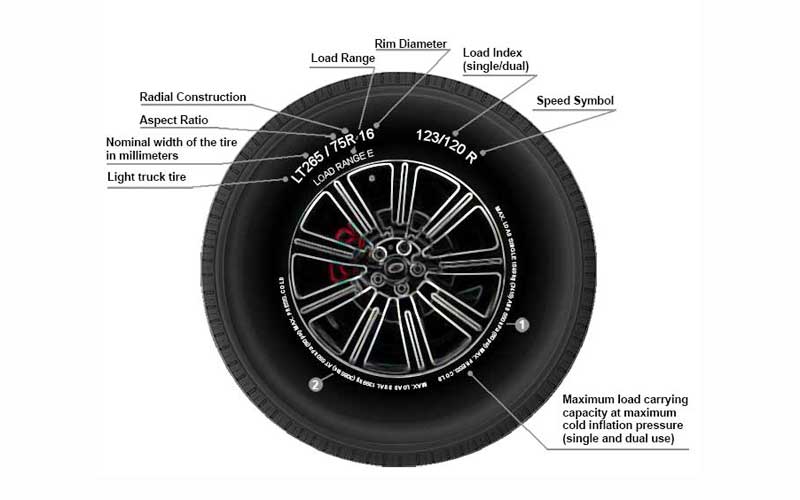
The best traction grade is AA. A tire with AA traction grade is considered to have the least action of pull over the surface in any condition.
A grade is allotted to a tire one category lower than AA following B grade and then C grade, the lowest possible grade to be able to enter the market and the minimum standard required by federal regulation.
Similarly, the best temperature grade is A. Then, a B grade is allotted following C grade. C grade tire has the minimum standard required by federal regulation. An A grade tire can go up to 150 mph and higher. B grade tire can rate between 100 and 115 mph and C grade rates between 85 and 100 mph. Any tire lower than C grade is not eligible to be sold in the US.
Conclusion
Knowing how to read your tire size would bring a change in your attitude towards taking care of your car and everything related to your car. You will have a better knowledge of your car’s tires, and it would make things easier for you.
You will no longer stand to be a man with questions. You’ll become the man with answers. You will know what wheel size you are looking for, what is the maximum capacity of load, maximum speed your tire can handle, and traction-temperature grades.
It would also change the way you would buy a tire. The shop keeper would not be able to make a fool out of you and make you purchase a low-grade tire in the price of high grade one.
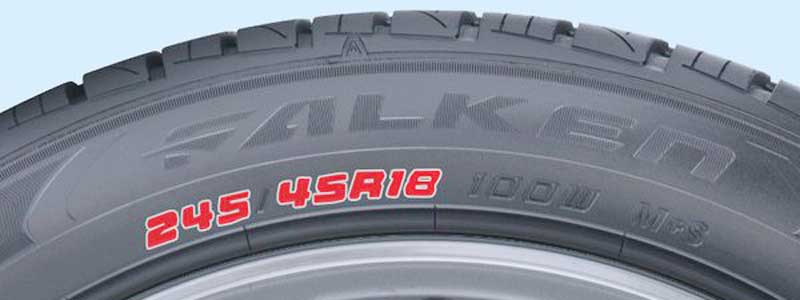





Post Comment